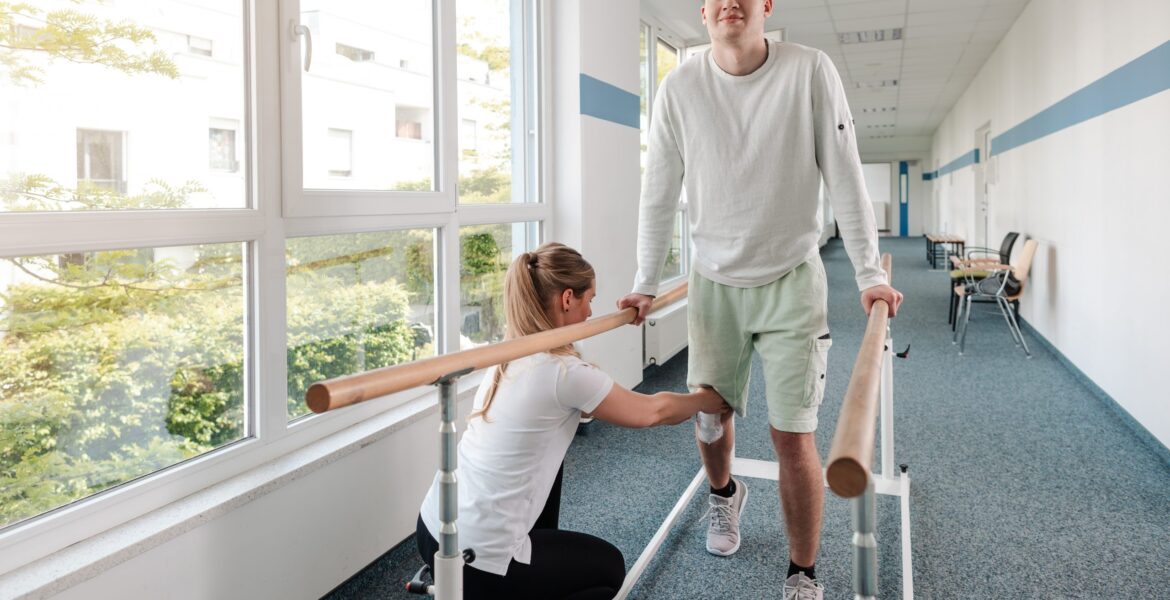
Mobility Challenges in Neuropathy and Dystonia: What Patients Experience
On September 12, 2025 by JoanneMobility is something many people take for granted until health conditions begin to interfere with simple, everyday movement. For individuals living with neuropathy and dystonia, maintaining independence often becomes a daily challenge. While the causes of these two conditions differ, both can significantly impact how a person walks, balances, and carries out routine tasks. Understanding these conditions, their overlap, and their effects on mobility is key for patients and caregivers alike.
Understanding Neuropathy and Dystonia
Neuropathy is a disease that happens when nerves in the body’s extremities get damaged. It can cause pain, numbness, and weakness, often starting in the hands and feet. Neuropathy symptoms vary depending on the type, but common ones include tingling sensations, burning pain, muscle weakness, and loss of coordination. Because the nerves play a vital role in controlling movement, neuropathy often disrupts balance and makes walking difficult.
On the other hand, what is dystonia? People with dystonia have uncontrollable muscle spasms that make them twist or stand in strange ways over and over again. Neuropathy is caused by damage to nerves, while dystonia is caused by problems communicating between brain cells in the motor paths. The contractions can happen in one area of the body, like the neck or hand, or in several areas at once, making it hard to move and coordinate.
How Neuropathy Impacts Mobility
For people with neuropathy, mobility issues stem largely from reduced sensation and muscle weakness. When nerves in the feet and legs are damaged, patients may struggle to feel the ground beneath them, leading to an unsteady gait and frequent stumbling. This lack of sensory feedback makes balance a constant challenge.
In addition, the pain associated with neuropathy symptoms—such as burning, stabbing, or shooting sensations—can discourage patients from walking or exercising. Over time, reduced activity may cause muscle atrophy, further worsening mobility. Many patients describe feeling as though their legs are “not cooperating,” making simple tasks like climbing stairs or standing for long periods exhausting.
How Dystonia Disrupts Movement
Dystonia affects mobility in a different way. Because the condition involves involuntary muscle contractions, patients may experience sudden twisting of the limbs or torso that throws off balance. For instance, leg dystonia can cause the foot to drag or turn inward, making walking awkward and painful.
Some patients also report that their muscles feel “locked” in a particular position, limiting the range of motion. These unpredictable contractions make daily activities such as walking through crowded spaces or carrying objects more difficult. Unlike neuropathy, where numbness and weakness dominate, dystonia is marked by a lack of control over muscles, which can be equally disabling.
Shared Mobility Challenges
Although neuropathy and dystonia have different causes, their impact on mobility overlaps in several ways:
- Falls and instability: Both conditions increase fall risk, making safety a constant concern.
- Loss of independence: Tasks like driving, cooking, or shopping may require assistance.
- Emotional strain: Anxiety about falling or appearing “different” in public can reduce social engagement.
- Adaptations needed: Patients often rely on canes, walkers, or customized footwear to move more confidently.
Managing Mobility Problems
Treatment and support can make a meaningful difference. At clinics such as South Valley Neurology, patients benefit from comprehensive evaluations and tailored treatment plans. For neuropathy, management may include medications for pain, physical therapy, and addressing underlying causes such as diabetes. There are many ways to treat dystonia, from taking pills or getting botulinum toxin shots to, in the worst cases, deep brain stimulation.
Physical therapy and occupational therapy are crucial for both conditions. Strengthening muscles, practicing balance exercises, and learning adaptive strategies help patients stay mobile longer. Lifestyle adjustments—like wearing supportive shoes, reducing clutter at home, and pacing daily activities—also contribute to safer movement.
Living with Hope
While neuropathy and dystonia create significant challenges, patients are not without options. With proper diagnosis, effective treatment, and support from specialists, it is possible to manage mobility issues and maintain a fulfilling lifestyle. Raising awareness of these conditions ensures that patients receive timely care and compassion from family, caregivers, and the medical community.
You may also like
Archives
- October 2025
- September 2025
- August 2025
- July 2025
- June 2025
- May 2025
- April 2025
- March 2025
- February 2025
- January 2025
- December 2024
- November 2024
- October 2024
- September 2024
- August 2024
- July 2024
- June 2024
- May 2024
- April 2024
- March 2024
- February 2024
- January 2024
- December 2023
- November 2023
- October 2023
- September 2023
- July 2023
- June 2023
- May 2023
- April 2023
- March 2023
- February 2023
- January 2023
- December 2022
- November 2022
- October 2022
- September 2022
- August 2022
- July 2022
- May 2022
- April 2022
- November 2021
- June 2021
- February 2021
- November 2020
- October 2020
- September 2020
- August 2020
- July 2020
- June 2020
- May 2020
- April 2020
- March 2020
- February 2020
- January 2020
- December 2019
- November 2019
- October 2019
- September 2019
- August 2019
- July 2019
- June 2019
- May 2019
- April 2019